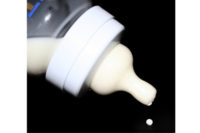Food recalls were up in the second quarter of 2016, in part because of powerful new testing methods and tighter regulations — an indication of a new normal rather than an outlying spike in the trend.
According to recent recall data report from Steryicycle ExpertSOLUTIONS, FDA recalled food units in the second quarter (Q2) of 2016 were more than 80 times higher than the first quarter (Q1), while USDA recalled pounds more than 45 times higher. FDA contamination recalls alone rose 167 percent from Q1 to Q2 – higher than any quarter in 2014 or 2015.
Many of these recalls are victim of the multiplier effect, where one ingredient supplier’s recall can impact dozens of companies and brands. The sunflower seed listeria recall alone accounted for more than 645,000 recalled units in Q2, according to researchers.
“The question for companies and consumers alike is: ‘what is behind these trends?’ It may appear that contamination is happening far more frequently. But rather than indicating a growing issue with food safety, many of these recalls point toward advancements in testing — specifically, whole genome sequencing,” the report says.
As testing becomes faster, cheaper and more precise, regulators have also reduced the acceptable levels of pathogens in certain classes of foods. Even foods meant for cooking, which include kill steps, are subject to stricter regulations.
While these enhanced testing methods create opportunities to improve food safety, the likely side effect will be more recalls and increased regulatory complexity.
“It's not that there's necessarily more contamination, it's that the industry is getting better at detecting what's there,” says Kevin Pollack, vice president, Stericycle. “These recalls increased when genome testing gave companies and regulators better tools for detecting bacteria. In the past, they might not have known what was causing an outbreak, but now it's easier to identify contamination causes and recall affected products to better protect consumers.”
Outside the U.S., the recall report revealed global food recalls are also on the rise, making recall execution more complex than ever before. So far in 2016, 12 percent of recalls have been global, higher than the 8 percent average in previous years. Something as minor as a labeling error can trigger a recall when there are jurisdictional differences in the way an ingredient is regulated.
“Disparities between U.S. and EU regulations are already having an impact on global food recalls, and it's a trend we expect to continue,” Pollack says. “For example, companies have been forced to remove products from shelves in some European countries due to propylene glycol, which is ‘generally recognized as safe’ in the U.S. The long term goal is to increase consumer safety. It's just that each jurisdiction has their own idea of how to reach that goal.”








